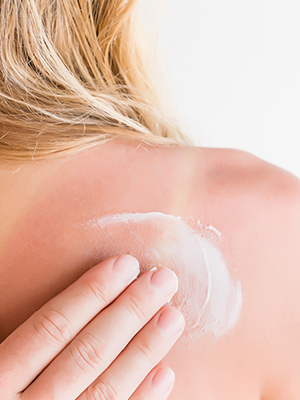5 Sunscreen chemicals that may mess with your hormones
Summer is here, and we’re all getting ready for our holiday in the sun, either home or abroad, and we need to pack that our essential sunscreen to protect our skin from those skin damaging sun rays.
Sunscreen products are necessary to protect the skin from harmful UV rays, and also to maintain healthy skin all year round.
Sunscreen market and testing
The sunscreen market is massive, market and, the companies that make and sell sunscreen ingredients and products are required to test their products thoroughly for potential short-term and long-term health effects.
These test should include, toxicity testing for irritation and skin allergies, as well as testing for skin absorption and the potential to cause cancer, potential disruptions to the hormone system that may cause harm during reproduction and development.
In 2021, the Food and Drug Administration (FDA), which governs sunscreen safety, outlined its most recent updates to sunscreen regulations.
It found that only two ingredients, zinc oxide and titanium dioxide, could be classified as safe and effective, based on the information currently available. In 2021 the European Commission published their initial opinions on the safety of three organic ultraviolet, or UV, filters, found in some sunscreen products, oxybenzone, homosalate and octocrylene.
It found that two of them are not safe in the amounts at which they’re currently used and have proposed that they reduce the percentage amounts to lower safer levels.
The FDA has required additional safety data because of health concerns and studies by the Environment Working Agency, hat show these ingredients can be The FDA has required additional safety data because of health concerns and studies by the agency that show these ingredients can be absorbed through the skin.
In recent years, studies have also raised concerns about endocrine-disrupting effects of some ingredients. So, when choosing a sunscreen it’s best that you check and do your own research to see which ingredients are safe to use in your sunscreen.
Constant exposure to some of these potentially harmful sunscreen ingredients raises concerns, especially because there is not enough safety data for most ingredients.
These are some to look out for which may be linked to potential hormone disruption.
1. Oxybenzone
Is potentially one of the most concerning sunscreen ingredients. Publicly available scientific research, indicates that it is readily absorbed through the skin levels in those who It can cause allergic skin reactions, behaves like a hormone disruptor in some studies and may cause more harm to children.
Recently, the European Commission found current human exposure levels to oxybenzone to be unsafe and proposed much lower concentration restriction.
Several countries ban the sale of sunscreens that contain this ingredient, because it may harm aquatic life.
2. Octinoxate, or octyl methoxycinnamate
Octinoxate is an organic UV filter. It is readily absorbed into the skin and continues to be absorbed after the sunscreen has been applied. It has been found in some blood samples up to 16 times above the proposed FDA safety threshold.
Animal studies have shown that the chemical can have hormone effects on the metabolic system and affects thyroid hormone production. Octinoxate can also cause allergic reactions after the person who has applied it is exposed to ultraviolet light. Several countries ban the sale of sunscreens made with octinoxate, because they may harm aquatic life.



3. Homosalate
Homosalate is an organic UV filter widely used in some sunscreens. The FDA has proposed that there is insufficient data to evaluate whether it is safe and effective to use in sunscreens. Homosalate has been found to penetrate the skin, disrupt hormones and produce toxic breakdown by products over time.
A recent opinion from the European Commission found that homosalate was not safe to use at concentrations up to 10 percent and recommended a maximum concentration of 1.4 percent, because of concerns for potential hormone disruption.
4. Octisalate
Octisalate, an organic UV filter, readily absorbs through the skin at levels 10 times more than 0.5 nanograms per milliliter, the FDA’s cut off for systemic exposure.
This cut off is the maximum concentration that may be found in blood before there are potential safety concerns.
The FDA has requested additional safety tests when a sunscreen is absorbed above this level. Analysis by the Environmental Protection Agency suggests octisalate may have endocrine effects, weakly binding to the estrogen receptor.
5. Octocrylene
Octocrylene readily absorbs through the skin at levels about 14 times the FDA cut off for systemic exposure. But the agency suggested there is not enough data to determine whether it can be classified as safe and effective.
Octocrylene has been linked to aquatic toxicity, with the potential to harm coral health. It is often contaminated with benzophenone, which is known to cause cancer.



So, when choosing a sunscreen it’s best that you check and do your own research to see which ingredients are safe to use in your sunscreen.
source: environmental working group (ewg.org)
